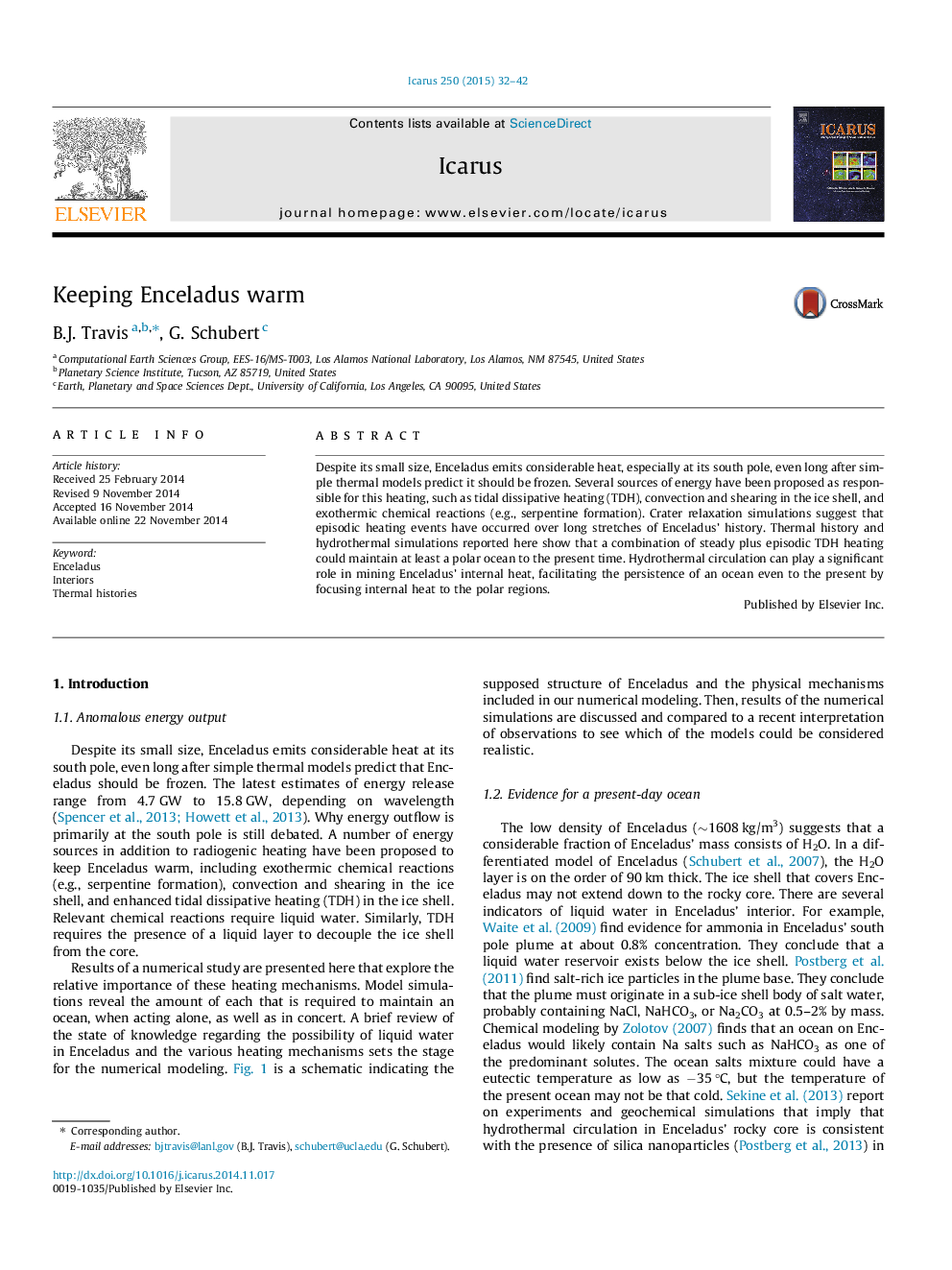| Article ID | Journal | Published Year | Pages | File Type |
|---|---|---|---|---|
| 8136679 | Icarus | 2015 | 11 Pages |
Abstract
Despite its small size, Enceladus emits considerable heat, especially at its south pole, even long after simple thermal models predict it should be frozen. Several sources of energy have been proposed as responsible for this heating, such as tidal dissipative heating (TDH), convection and shearing in the ice shell, and exothermic chemical reactions (e.g., serpentine formation). Crater relaxation simulations suggest that episodic heating events have occurred over long stretches of Enceladus' history. Thermal history and hydrothermal simulations reported here show that a combination of steady plus episodic TDH heating could maintain at least a polar ocean to the present time. Hydrothermal circulation can play a significant role in mining Enceladus' internal heat, facilitating the persistence of an ocean even to the present by focusing internal heat to the polar regions.
Keywords
Related Topics
Physical Sciences and Engineering
Earth and Planetary Sciences
Space and Planetary Science
Authors
B.J. Travis, G. Schubert,
